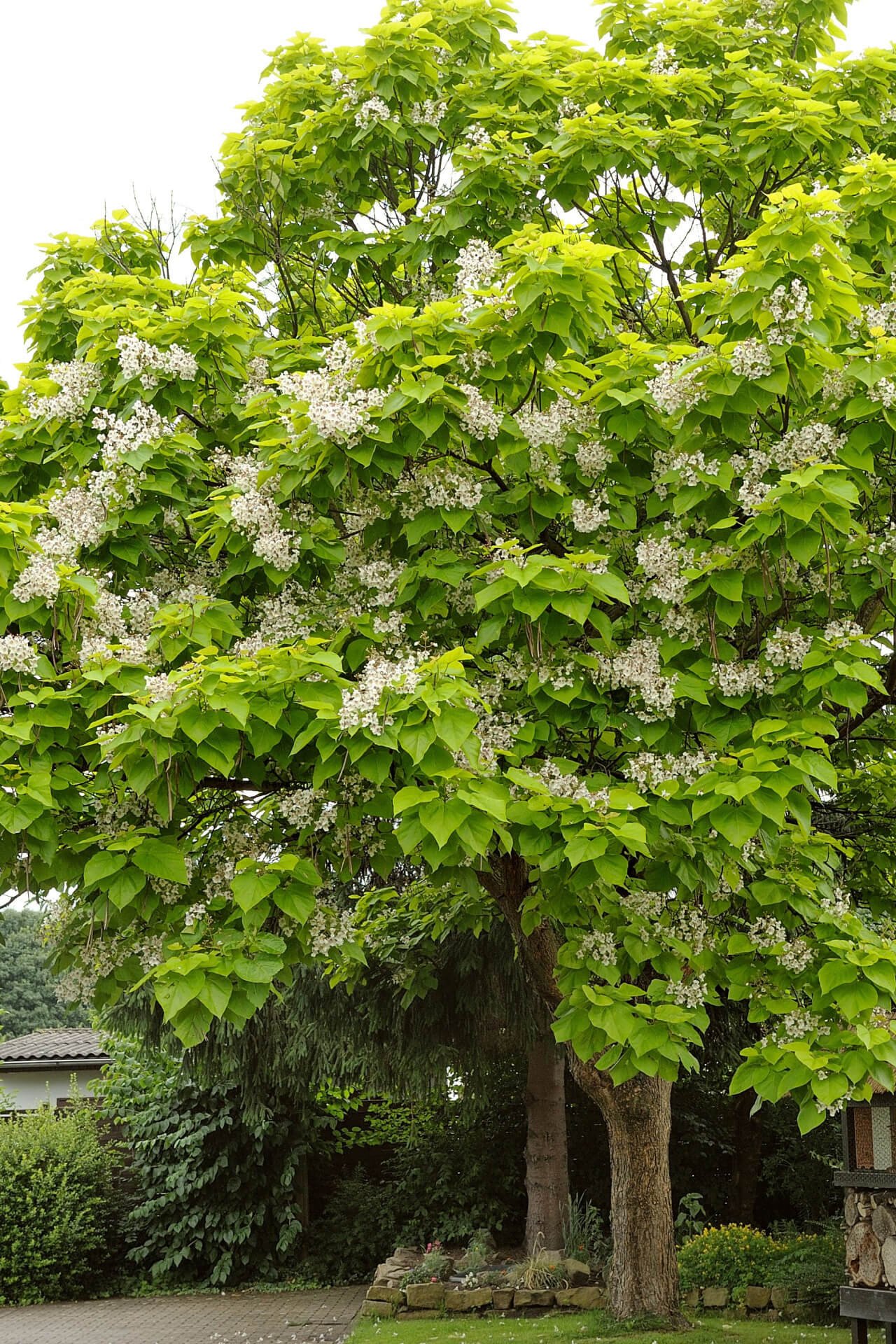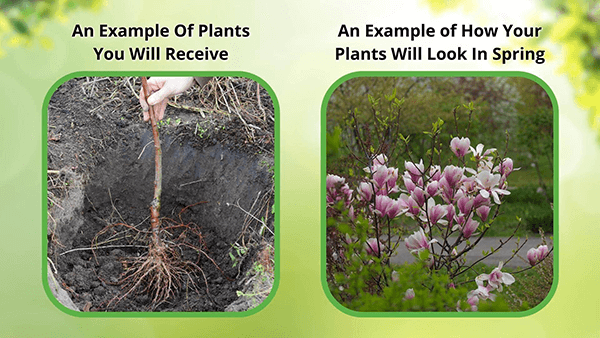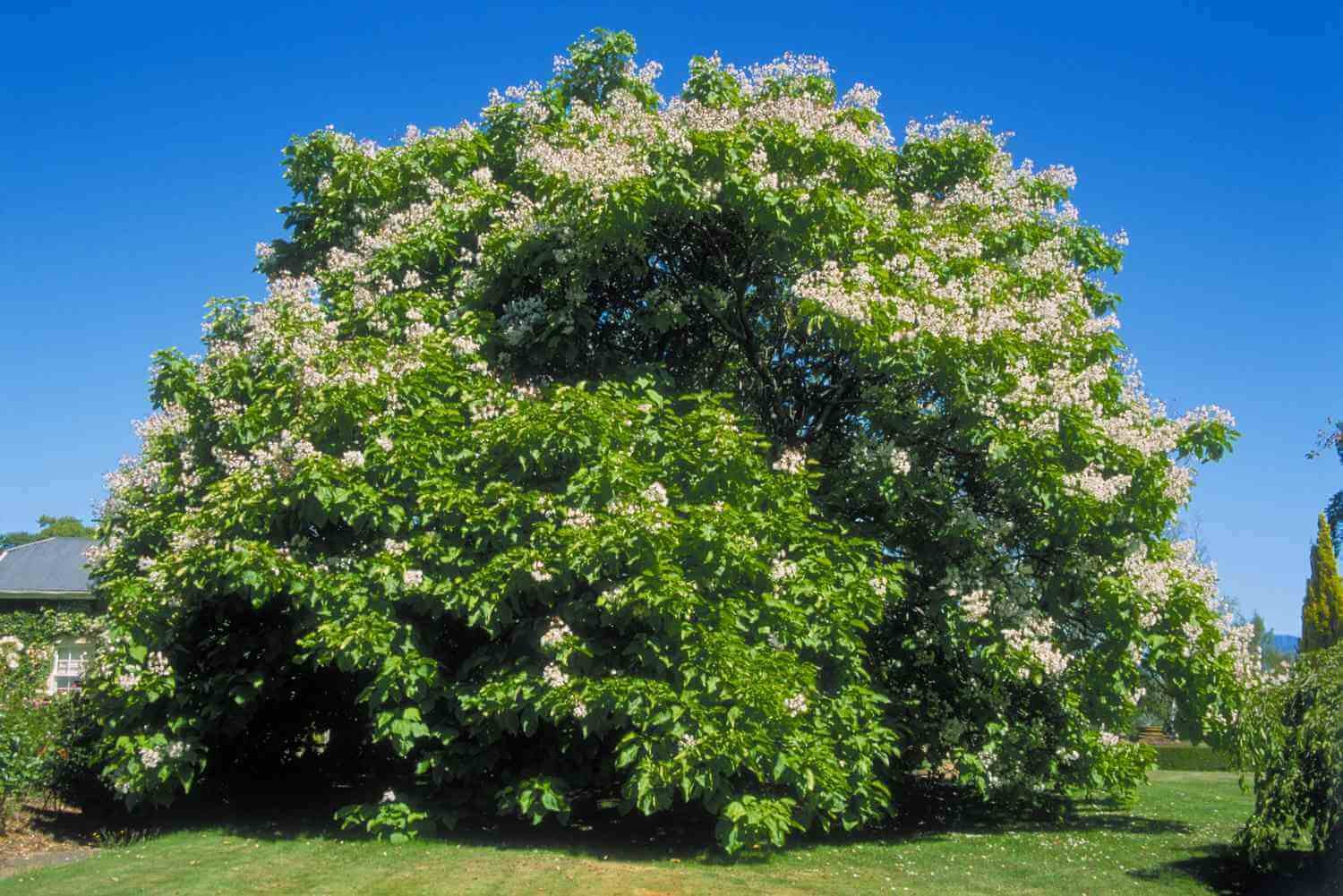



Catalpa Tree
This plant ships:
NowWe sell bare root plants - click here to see what you'll receive
Catalpa Tree - Catalpa Speciosa Warder ex Engelm
The Catalpa Tree is a deciduous hardwood known for its large, heart-shaped leaves, showy clusters of white, trumpet-shaped flowers, and long, bean-like seed pods. It is also known for its unique appearance, ease of care, and environmental benefits.
A tree is a deciduous family member, which means it's similar to oak or other tall and thick types. Growing this product has many benefits, such as helping stabilize soil and preventing erosion caused by excess moisture.
This tree also has beneficial properties. Near the middle of summer, it has worms on it, which are highly sought after as fishing bait. They attract fish much more than most lures and are a highly credible attractant to bass and blue gill fish.
Catalpa Tree Has Many Environmental Benefits
This natural product can grow up to 60 feet in height, making it one of the taller types you can place in a given landscape. It can produce showy white or yellow flowers and branches up to 12 feet around. They develop a fruit akin to an acorn that will drop during the late summer months.
Another key benefit is that it can rapidly grow and replenish its leaves. This is beneficial as it will likely become a habitat for birds, caterpillars, and other creatures that might use it to hide from predators or start a colony. The ability to quickly replenish its leaves is a crucial defense against getting sick, as it can be vulnerable to various insects that try to eat or otherwise use them.
The sphinx moth caterpillar is often used for bait and tends to be among the species that feed primarily on the leaves. Therefore, you can use this natural resource to help with your fishing and make your property look good. However, it's important to carefully watch for signs of an infestation and take corrective measures to avoid losing a valuable resource.
The Catalpa Tree Flowers Have a Pleasant Aroma
This natural resource on your property can help cleanse the outdoor air. This is partially because it can absorb carbon dioxide and other pollutants. The flowers also create a favorable fragrance that you and your neighbors will enjoy for as long as they are on your property.
The tree has delicate pinkish-white blossoms. The fruit emerges in the form of an elongated cylindrical pod. Because of its cigar-shaped fruit, it is also called a cigar.
The Size Of The Tree
They can reach 60 feet high and 40 feet wide and live for 60 years or more. They grow rapidly at first, but the growth spurt levels out as they get older. They have a rounded crown and spreading branches, giving the overall effect of a dense business. They are highly adaptable and will happily grow almost anywhere.
The fruit they produce is 8 to 15 inches long and turns brown as it matures. The seeds are released when the pods break open in fall and winter. They typically produce white, bell-shaped blossoms with ruffled and fringed edges. They bloom in early spring. The pods that contain the fruit seeds have a few white strands of hair at each end.
They take between five and seven years before they begin to display flowers and seed pods every year. On the other hand, produce blossoms and seed pods during the first two years of maturity.
The pods are typically a few centimeters wide and up to 30 centimeters long, with the flat seeds inside. The pods may remain attached over the winter, but the seeds mature in autumn.
They display large and distinctive leaves. The foliage is 12 inches long and seven inches wide. The leaves are heart—or oval-shaped. The broad leaves can reach one foot in length. The leaves shed annually turn bright yellow in fall and then black as winter approaches.
After the tree dries out, the wood is solid and highly rot-resistant. It's an excellent wood for furniture and fencing. The fibers that emerge from the fruit are commonly used to make rope. The native tree species has a solid and extensive root system that can prevent soil erosion.
It is large in size and has broad, heart-shaped leaves and stunning cymes of white, tubular flowers. It also has a very long, thin seed pod that looks like a cigar, hence the name cigar tree.
It prefers full sunlight and is tolerant of most types of soil; it can grow equally well in clay soils and good garden soils or sandy loams. They are fairly tolerant of cold, growing best in zones 4 through 8, which means they are suitable for colder regions.
Yes, some parts of the tree have been used in the traditional practice of medicine. The stem, roots and seeds are used for remedies for the treatment of diseases related to the respiratory system and bloodstream, infections, and skin diseases but should not be taken without proper knowledge about them.
The lifespan of Catalpa trees is between 50 and 150 years with the periods depending on environmental conditions of growth and management. If well maintained, they can be aesthetically pleasing elements in and around homes and other facilities for many years.
What is catalpa wood good for
This tree's obtained wood is light in specific gravity and remains highly resistant to decay, perfect for carving, furniture making, and putting up fence posts, among others. , it is also used as a carving tool and for making beautiful and enduring articles of artwork.
| Planting zone | [7, 8, 9] |
|---|---|
| Bloom season | Summer |
| Bloom color | White |
| Height At Maturity | Over 25 Feet |






Catalpa Tree
This plant ships:
Now| Planting zone | [7, 8, 9] |
|---|---|
| Bloom season | Summer |
| Bloom color | White |
| Height At Maturity | Over 25 Feet |

